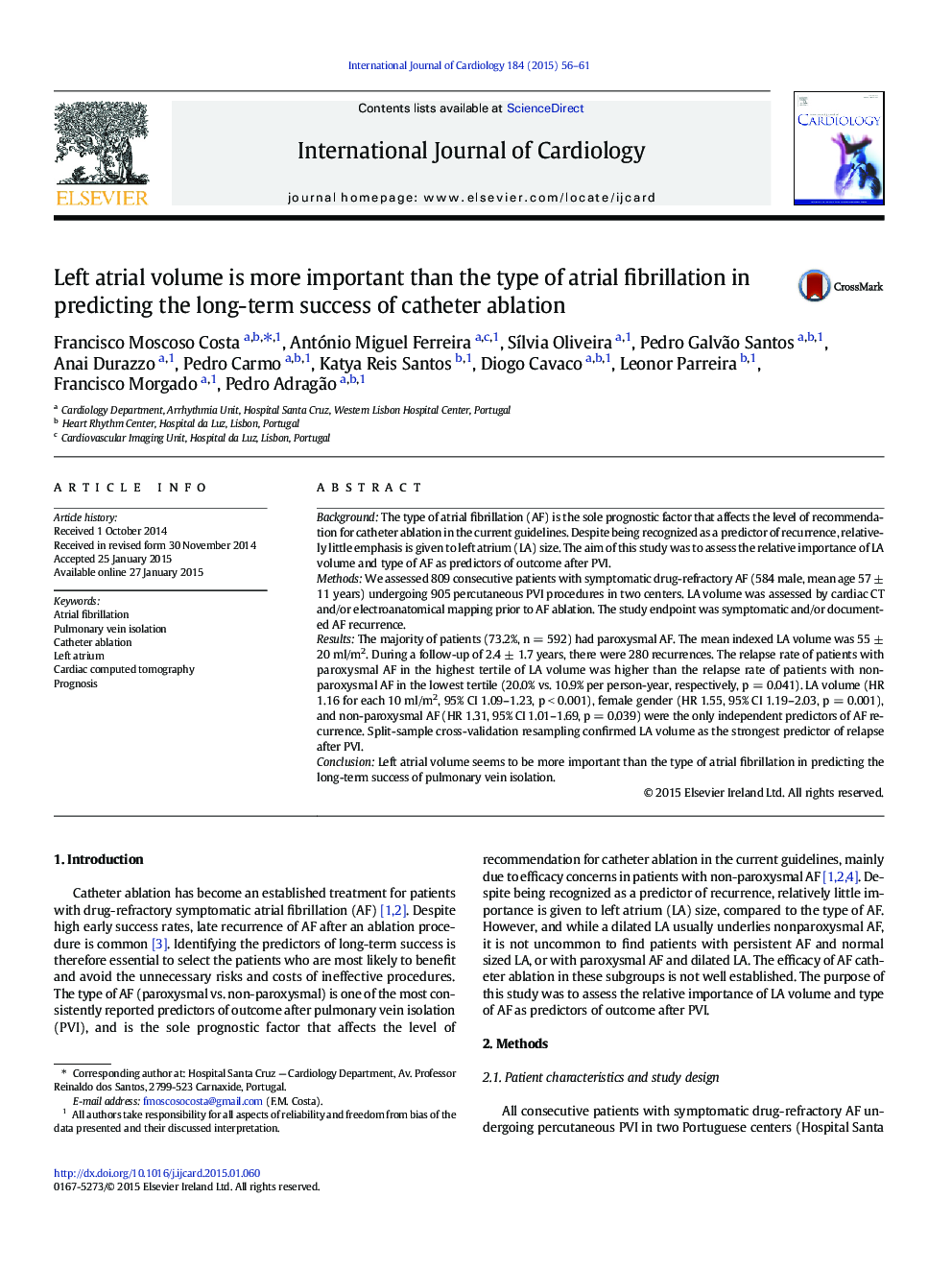| Article ID | Journal | Published Year | Pages | File Type |
|---|---|---|---|---|
| 5968278 | International Journal of Cardiology | 2015 | 6 Pages |
BackgroundThe type of atrial fibrillation (AF) is the sole prognostic factor that affects the level of recommendation for catheter ablation in the current guidelines. Despite being recognized as a predictor of recurrence, relatively little emphasis is given to left atrium (LA) size. The aim of this study was to assess the relative importance of LA volume and type of AF as predictors of outcome after PVI.MethodsWe assessed 809 consecutive patients with symptomatic drug-refractory AF (584 male, mean age 57 ± 11 years) undergoing 905 percutaneous PVI procedures in two centers. LA volume was assessed by cardiac CT and/or electroanatomical mapping prior to AF ablation. The study endpoint was symptomatic and/or documented AF recurrence.ResultsThe majority of patients (73.2%, n = 592) had paroxysmal AF. The mean indexed LA volume was 55 ± 20 ml/m2. During a follow-up of 2.4 ± 1.7 years, there were 280 recurrences. The relapse rate of patients with paroxysmal AF in the highest tertile of LA volume was higher than the relapse rate of patients with non-paroxysmal AF in the lowest tertile (20.0% vs. 10.9% per person-year, respectively, p = 0.041). LA volume (HR 1.16 for each 10 ml/m2, 95% CI 1.09-1.23, p < 0.001), female gender (HR 1.55, 95% CI 1.19-2.03, p = 0.001), and non-paroxysmal AF (HR 1.31, 95% CI 1.01-1.69, p = 0.039) were the only independent predictors of AF recurrence. Split-sample cross-validation resampling confirmed LA volume as the strongest predictor of relapse after PVI.ConclusionLeft atrial volume seems to be more important than the type of atrial fibrillation in predicting the long-term success of pulmonary vein isolation.
